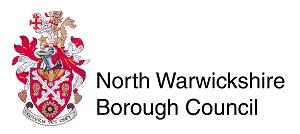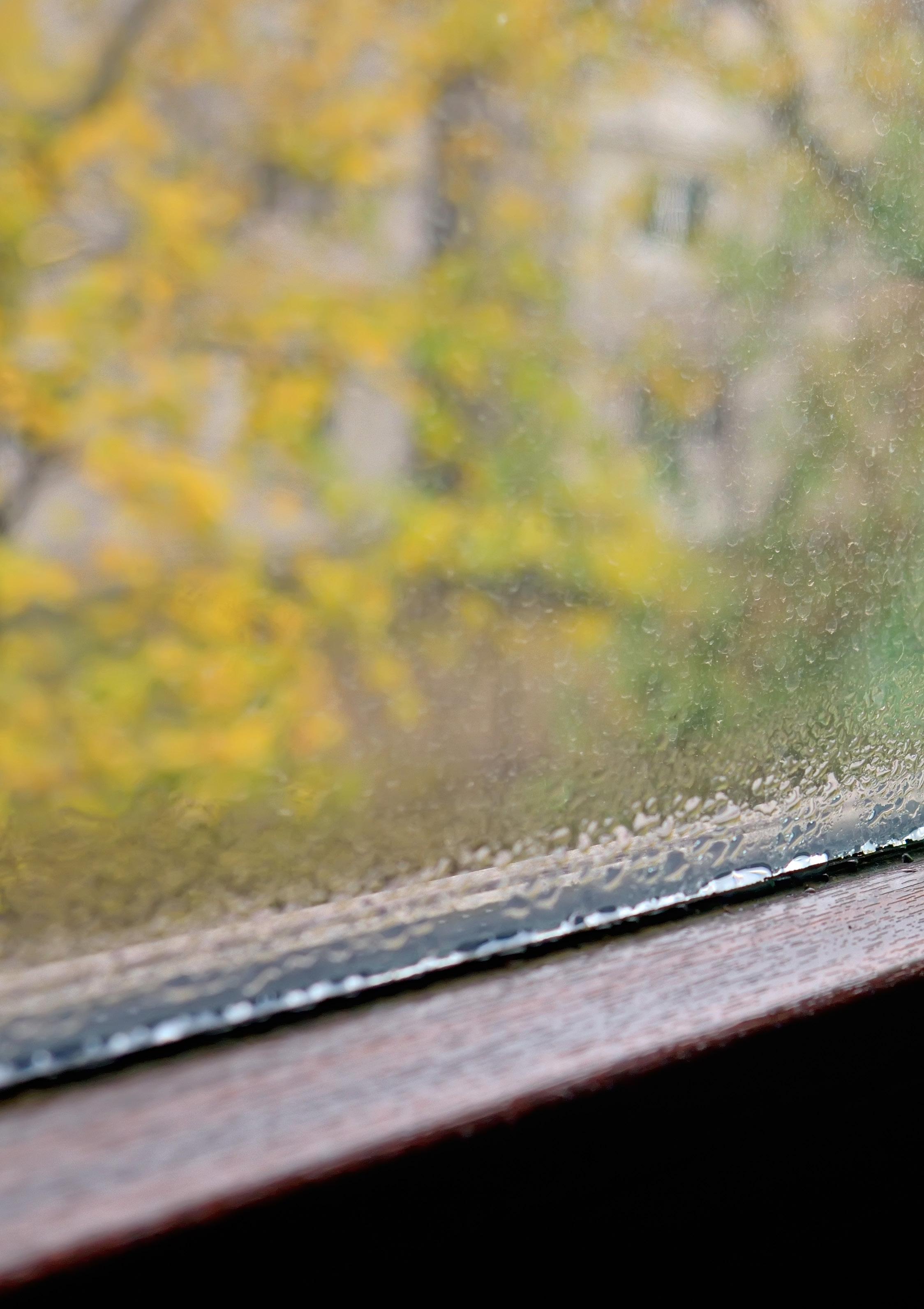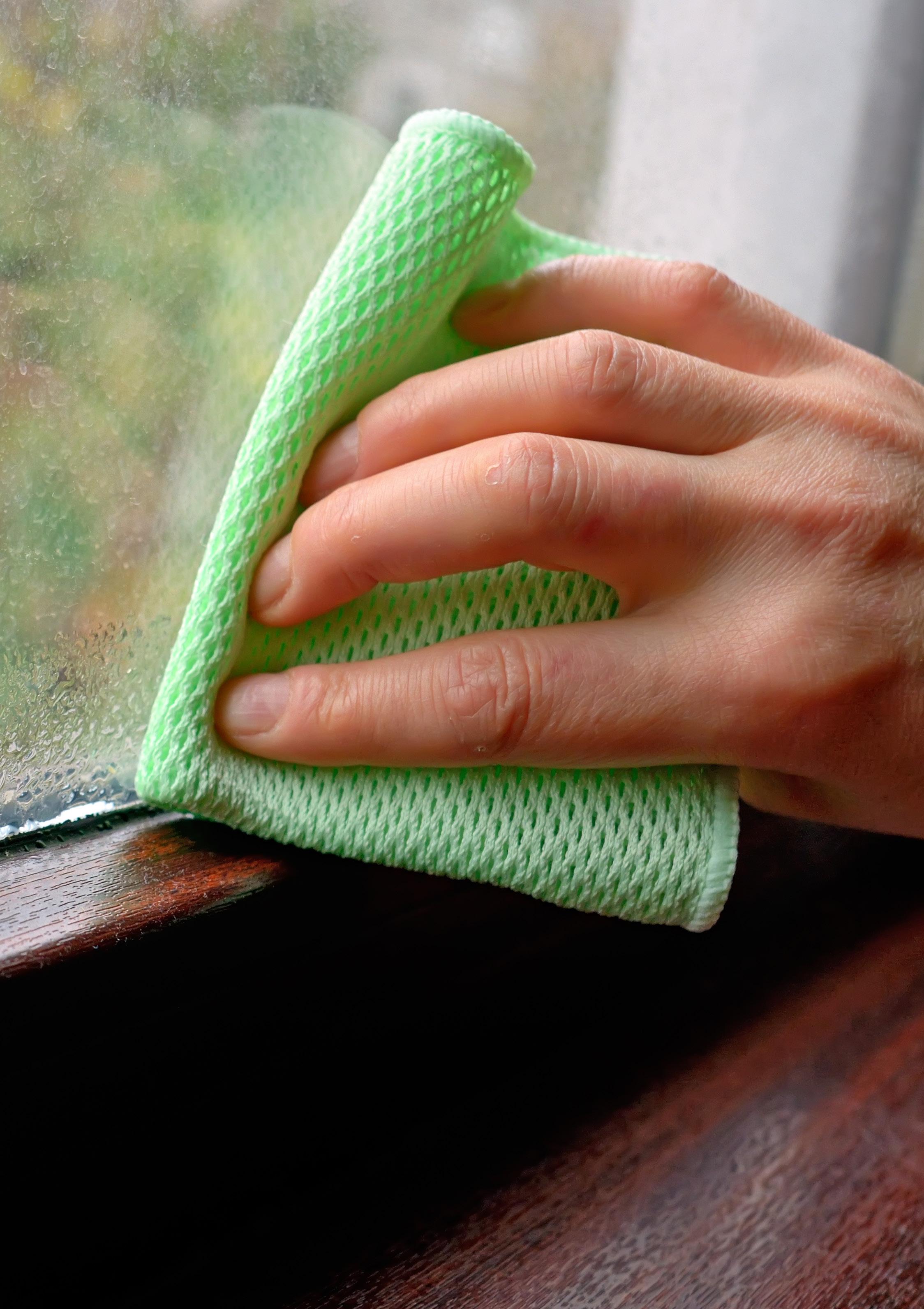
Preventing damp and mould in your home
Damp is very common in UK homes and can cause all sorts of problems, including mould on walls and furniture or making timber window frames rot. Damp also encourages the growth of mould and mites which can be the source of many health problems, including respiratory infections, asthma and allergies.
Types of dampness
There are four main types of dampness that could affect your home. It is important to understand the difference between them so that you can effectively treat the problem.
1. Rising damp. This is caused by water rising from the ground into the home. The water gets through or round a broken damp proof course (DPC) or passes through the natural brickwork if the property was built without a DPC. A DPC is a horizontal layer of waterproof material put in the walls of a building just above ground level. It stops moisture rising through the walls by capillary action. Rising damp will only affect basements and ground floor rooms. It will normally rise no more than 12 to 24 inches above ground level (300mm to 600mm) and usually leaves a ‘tide mark’ low down on the wall. You may also notice white salts on the affected areas. Rising damp will be present all year round but is more noticeable in winter. If left untreated it may cause wall plaster to crumble and paper to lift in the affected area.
2. Penetrating dampness. This type of dampness will only be found on external walls or in the case of roof leaks, on ceilings. It only appears because of a defect outside the home, such as missing pointing to the brickwork, cracked rendering or missing roof tiles. These defects then allow water to pass from the outside to the inner surfaces. Penetrating dampness
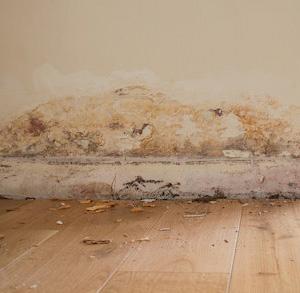
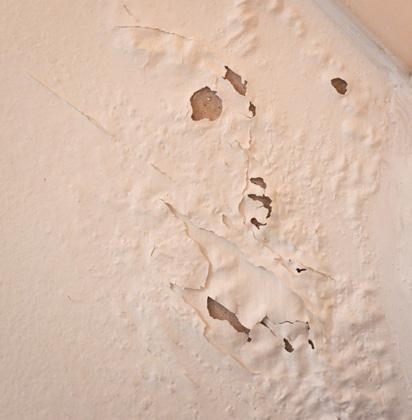
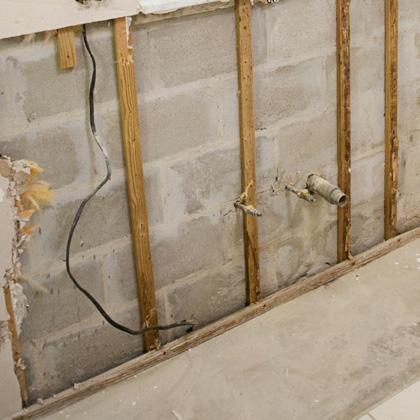
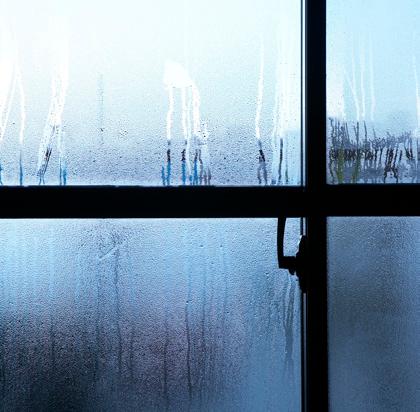
is far more noticeable following a period of rainfall and will normally appear as a well-defined ‘damppatch’ which looks and feels damp to the touch.
3. Defective plumbing leaks from water and waste pipes, especially in bathrooms and kitchens, are relatively common. They can affect both external and internal walls and ceilings. The affected area looks and feels damp to the touch and remains damp whatever the weather conditions outside. A quick examination of the water and waste pipes serving the kitchen and bathroom and the seals around the bath, shower and sinks; plus the external pipework, such as guttering will usually find the source of the problem.
4. Condensation. While some damp is caused by a problem with the building itself for example through leaking pipes, a damaged roof, blocked gutters or gaps around window frames, many cases are caused by condensation. Condensation occurs when moist air comes into contact with a colder surface like a wall, window, mirror etc. The air cannot hold the moisture and tiny drops of water appear. It also occurs in places the air is still, like the corners of rooms, behind furniture or inside wardrobes.
Condensation and mould growth
Most homes will be affected by condensation at some point. However, certain activities can increase the problem. Whether you are an owner occupier or a rent-paying tenant, condensation and mould growth is often due to habits and lifestyle. Cooking, washing, drying clothes indoors, even breathing - all produce water vapour that can only be seen when tiny drops of water (condensation) appear on colder surfaces such as walls, windows, ceilings or mirrors. The amount of condensation in a home depends upon three factors:
Did knowyou
in an average week a family of four can add moisture to the air equivalent to 40 litres of water a week just by breathing, 20 litres by cooking, washing and bathing and 15 litres drying clothes indoors
1. How much water vapour is produced by the actions of its residents
2. How cold or warm the property is
3. How much air circulation (ventilation) there is Simply turning up the heating will not sort out the problem, this may only temporarily reduce condensation. All three factors may need to be looked at to reduce the problem. The first sign of a problem is water vapour condensing on windows and other cold surfaces, which then takes a long time to disappear, allowing surfaces to become damp. The second indication is black mould patches growing on these damp areas.
Black mould
Mould spores are invisible to the human eye and are always present in the atmosphere both inside and outside dwellings. They only become noticeable when they land on a surface upon which they can grow and then multiply. For mould to thrive and survive it requires four elements
1. Moisture - obtained from condensation
2. Food - such as wallpaper or emulsion paint
3. Suitable temperature - courtesy of the householder
4. Oxygen – through breathing!
Condensation prevention checklist
These steps can help to reduce the amount of condensation and thus black mould growth around your home.
• In colder weather try and keep temperatures between 18-21°C in main living areas whilst indoors.
• Don’t block airbricks or air vents.
• To kill and remove mould wipe down walls and window frames with a fungicidal wash which carries a Health and Safety Executive approval number.
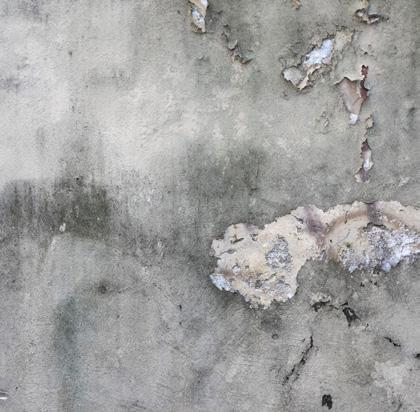
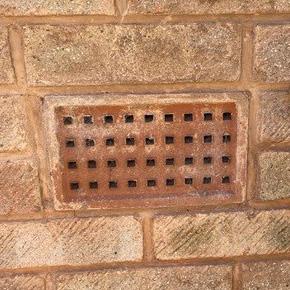
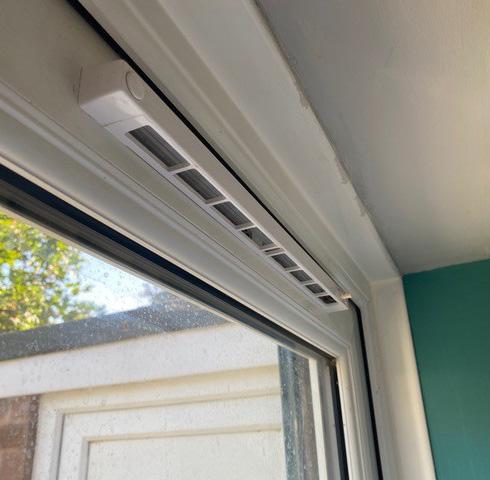
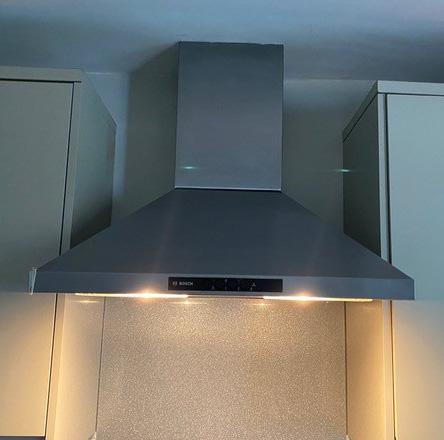
• Dry washing outside where possible.
• Don’t dry clothes on radiators. This will make your boiler work harder to heat your house and cost almost as much as using a tumble dryer, whilst creating a lot of condensation.
• If you have to dry clothing indoors, and don’t have a tumble dryer, place clothes on a drying rack in a sunny room where a window can be opened slightly and keep the door closed.
• No drying rack? Put your clothes on hangers and hang from a curtain pole above a slightly opened window; this can also reduce the need for ironing.
Living room
Open window trickle vents during the day or when going out, or open windows for at least 10 minutes every day.
Kitchen
Close internal doors whilst cooking and open window(s). Use an extractor fan if you have one.
Put lids on pans (this also reduces boiling times and helps save money). Only boil as much water as you need in a kettle to reduce steam and save money.
Bathroom
Open windows after bathing/washing and leave them open for about 20 minutes if possible
Use an extractor fan if you have one. Take shorter and cooler showers!
Wipe down windows/mirrors/tiles/shower doors with a window squeegee and mop up the moisture with a super absorbent cloth which can be wrung out in the sink.

Do not leave wet towels lying around. Checklist ✓ try to keep temperature between 18-21°C ✓ don’t block vents ✓ use fungicidal wash ✓ dry washing outside where possible
Bedroom
Wipe down windows with a window squeegee. Open window trickle vents during the day or when going out, or open windows for at least 10 minutes every day. Do not put furniture, including beds, against any outside walls and try and leave a gap between the wall and furniture to allow airflow.
Decorating
When wallpapering, use a paste containing a fungicide to prevent further mould growth.
Use thermal lining paper under wallpaper when decorating.
Use mould resistant paint on areas prone to mould such as ceiling above windows.
It is also worth getting professional advice on other damp prevention measures which could keep your home warmer and improve energy efficiency. When the whole house is warmer, condensation is less likely to form. This could include;
•Insulating the loft
•Draught proofing windows and external doors
•Cavity insulation
•Secondary glazing
If your house already has mould
• Do not disturb mould by brushing or vacuum cleaning. This can increase the risk of respiratory problems.
• Treat any mould you may already have in your home then reduce the levels of condensation which in turn will restrict new mould growth.
• Mould is a living organism and needs to be killed
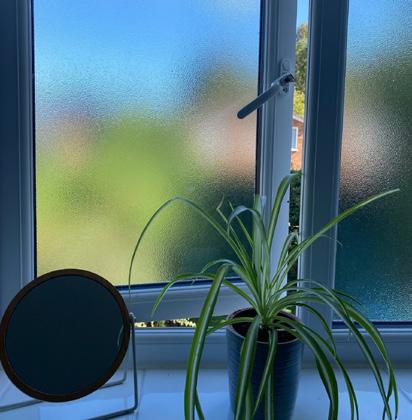

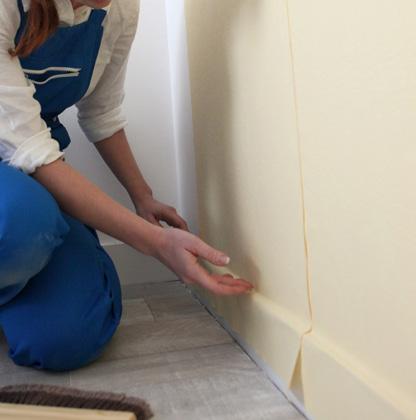
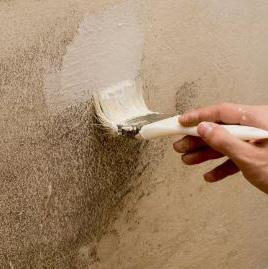
to eradicate it. To do this, wipe down affected areas with fungicidal wash making sure to follow the manufacturer’s instructions.
• After treatment, redecorate using a good quality fungicidal paint to prevent mould recurring
Help and Advice
A good home is a central part of people’s lives and good housing can help to improve health and wellbeing. Good quality air in the home is key to this and there are positive health benefits to living in a warm, dry home. Poor housing conditions like damp and mould can sometimes contribute to health problems, such as chest infections and asthma. If you are worried that the condition of your housing is affecting your health, please speak to your GP or your hospital specialist if you are under the care of your local hospital. If you are living in a rented property, you should tell your landlord as soon as possible if you discover mould. Prompt action will ensure that the problem can be rectified before it becomes deep-seated.
Useful contacts
Whilst this leaflet is intended to give help for both tenants and homeowners to identify and reduce condensation, as well as treating the mould growth associated with it, there may be occasions when you will wish to contact your local authority for further assistance.
If your landlord is a Housing Association or the Council, you should first contact your Housing Officer who will arrange for the matter to be investigated.
If you are renting privately then in the first instance you should raise the matter with your landlord or letting agent requesting that they investigate the matter. You should keep records of any contact or correspondence to show what actions have been taken in case the matter needs to be taken further. Should you need to ask your local Council to get involved then contact your Private Sector Housing team.
The contact details for the Housing & Private Sector Housing teams are listed overleaf.
If your local authority does not pursue enforcement action, tenants have the option to take action themselves under the Homes (Fitness for Human Habitation) Act 2018 or Section 82 of the Environmental Protection Act for a Statutory Nuisance. It is recommended to take independent legal advice before following either of these courses of action.
Act On Energy is a local charity providing free help to residents on all home energy efficiency matters. They can offer advice to those on a low income or with a health condition or struggling with energy bills.
Tel: 0800 988 2881
Visit: www.actonenergy.org.uk
Citizens Advice are a network of independent charities who offer confidential advice online, over the phone, and in person, for free.
North Warwickshire Citizens Advice
Freephone Adviceline: 0808 278 7827
Our local office number: 01827 712852 nwcab.org.uk/
Citizens Advice South Warwickshire
Call: 0300 330 1183 or 0800 144 8848 www.casouthwarwickshire.org.uk/
Bedworth, Rugby and Nuneaton Citizens Advice
Freephone Adviceline: 0808 250 5715 brancab.org.uk/
The Warwickshire Local Welfare Scheme helps our most vulnerable residents at times of unavoidable crisis when they have no other means of help. To enquire or to apply for support, call 0800 408 1448 or 01926 359182.
North Warwickshire Borough Council
Council tenants
Email: housingservices@ northwarks.gov.uk
Tel: 01827 715341
Private tenants - shared service with Nuneaton & Bedworth Borough Council
Nuneaton & Bedworth
Borough Council
Council tenants
Email: repairs@ nuneatonandbedworth.gov.uk
Tel: 02476 376344
Private tenants
Email: envhousing@ nuneatonandbedworth.gov.uk
Tel: 02476 376376
Rugby Borough Council
Email: contact.centre@rugby.gov.uk
Tel: 01788 533533
Stratford upon Avon District Council
Email: psht@stratford-dc.gov.uk
Tel: 01789 260848
Warwick District Council
Council Tenants
Email: housing.repairs@ warwickdc.gov.uk
Tel: 01926 456129
Private tenants
Email: privatesectorhousing@ warwickdc.gov.uk
Tel: 01926 456359
